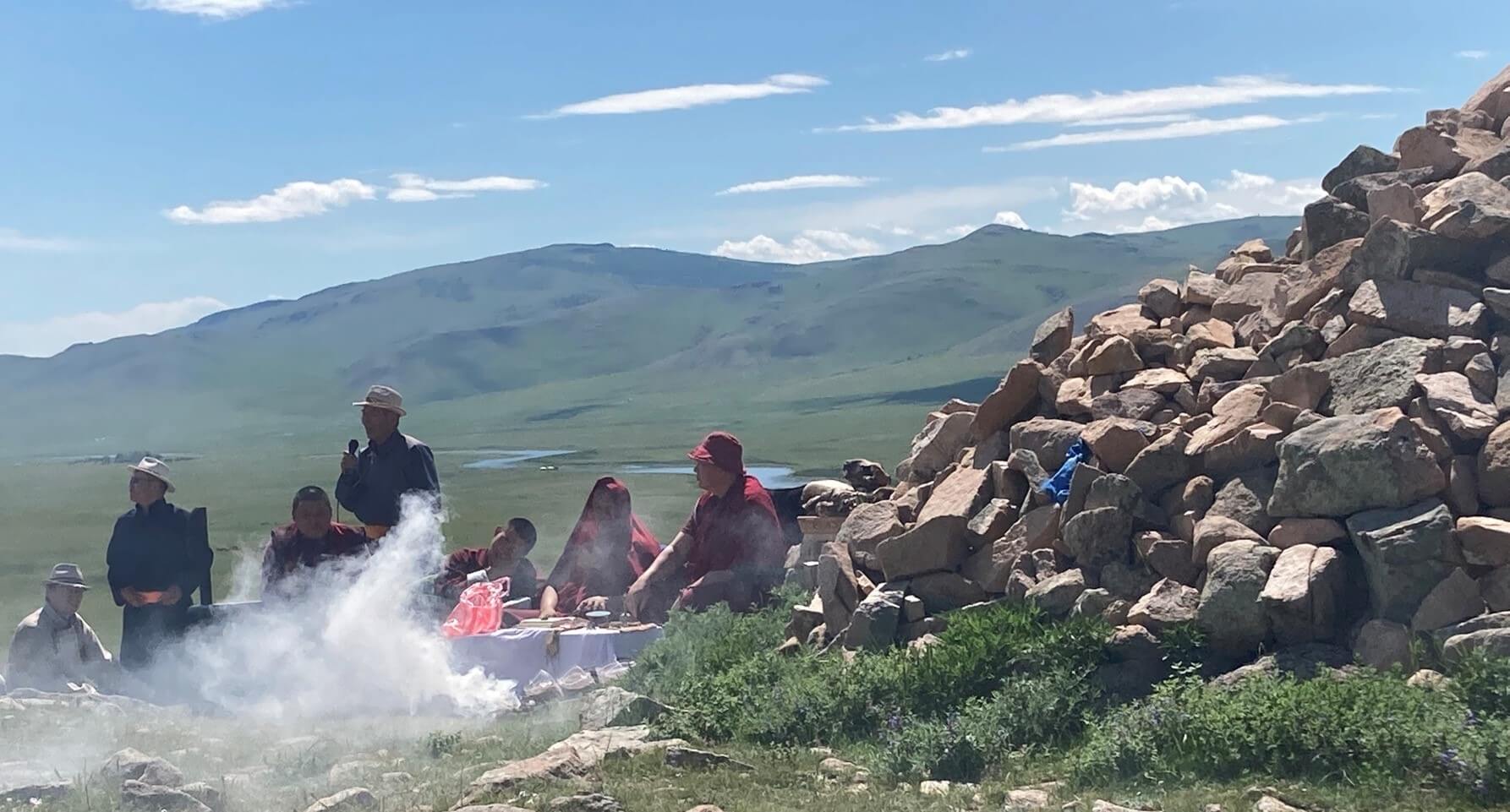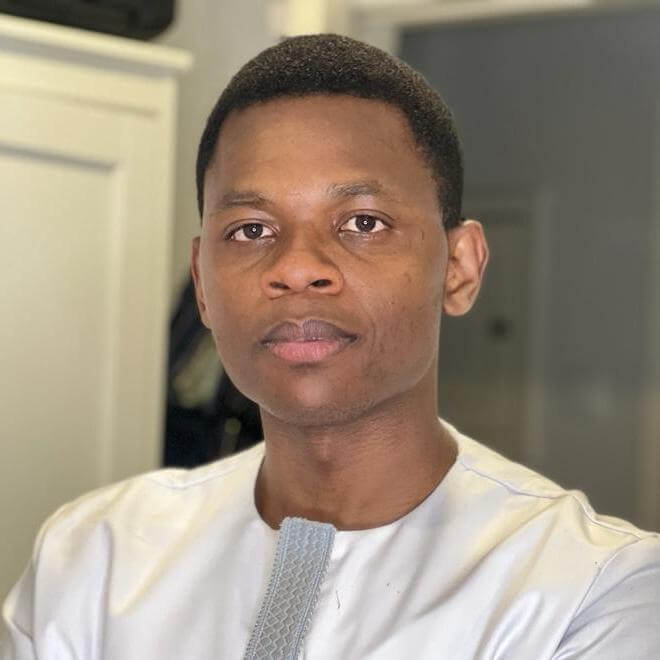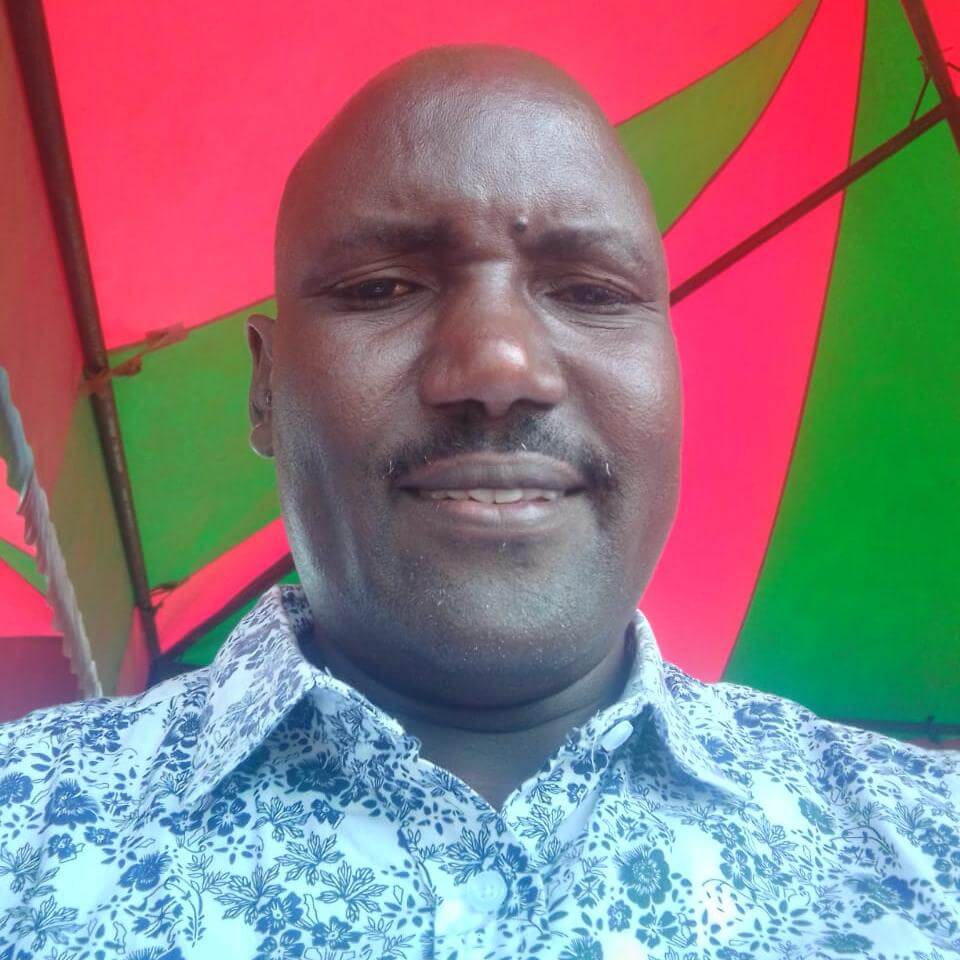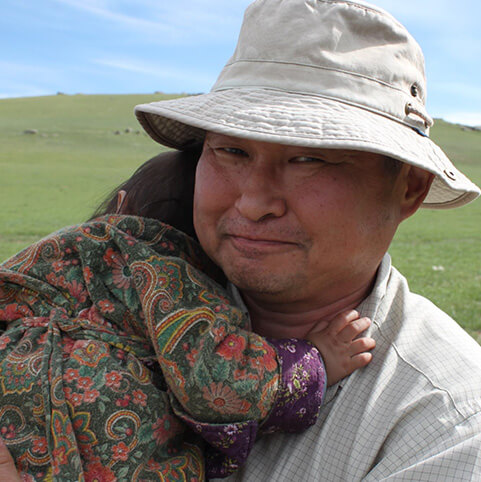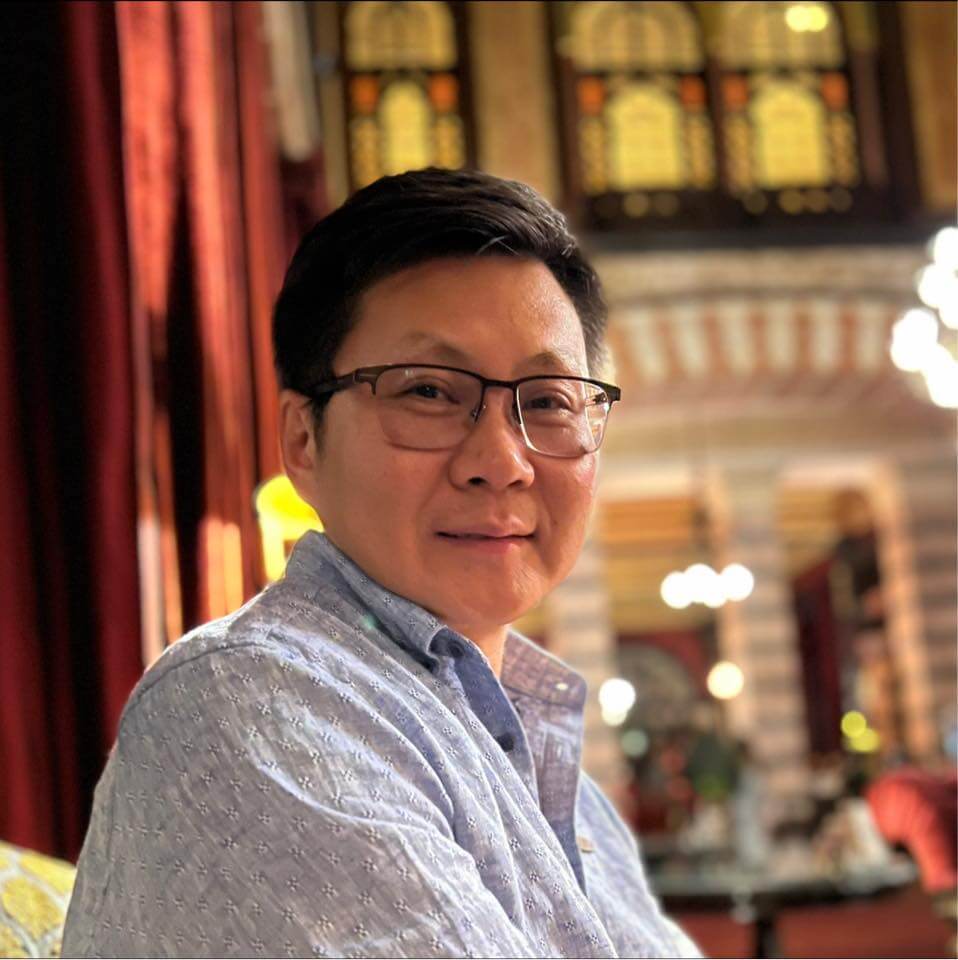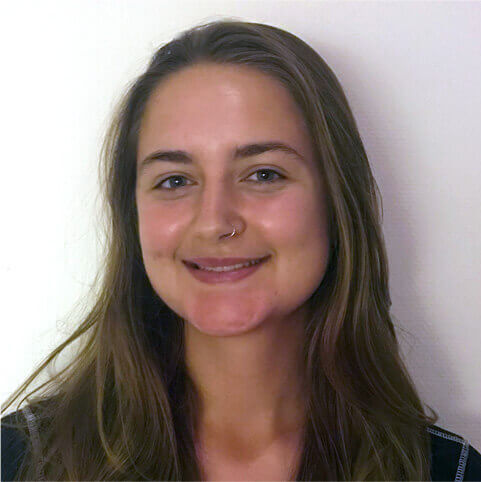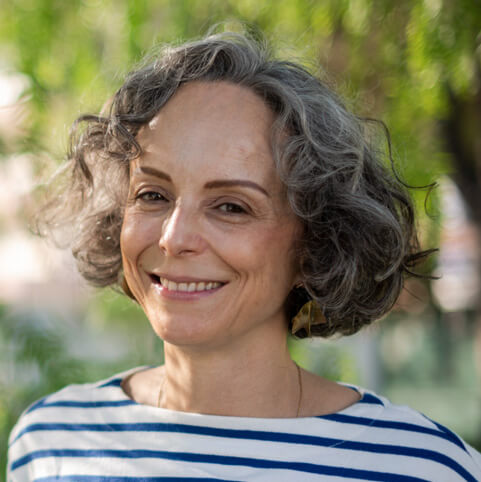August 12, 2022
By Troy Sternberg
On a beautiful summer’s day a large family reunion took place on the idyllic steppe. Bathed in sun, several large tents had been set up on the grassland below the revered hilltop. It was a typical Mongolian scene – elders sitting at tables under the festive tents, children playing and running around, food and fermented horse milk (airag) in abundance and several Landcruisers and SUVs parked behind. It felt like a celebration as we drove up, the vehicle spilling out Japanese researchers, Mongolians from Mogod Soum, Bulgan Aimag and Troy. New people! The kids and teenagers ran over to talk with us in many languages. Japanese! English! What a surprise in this rural haven, lush grass cascading into the nearby Orkhon River.
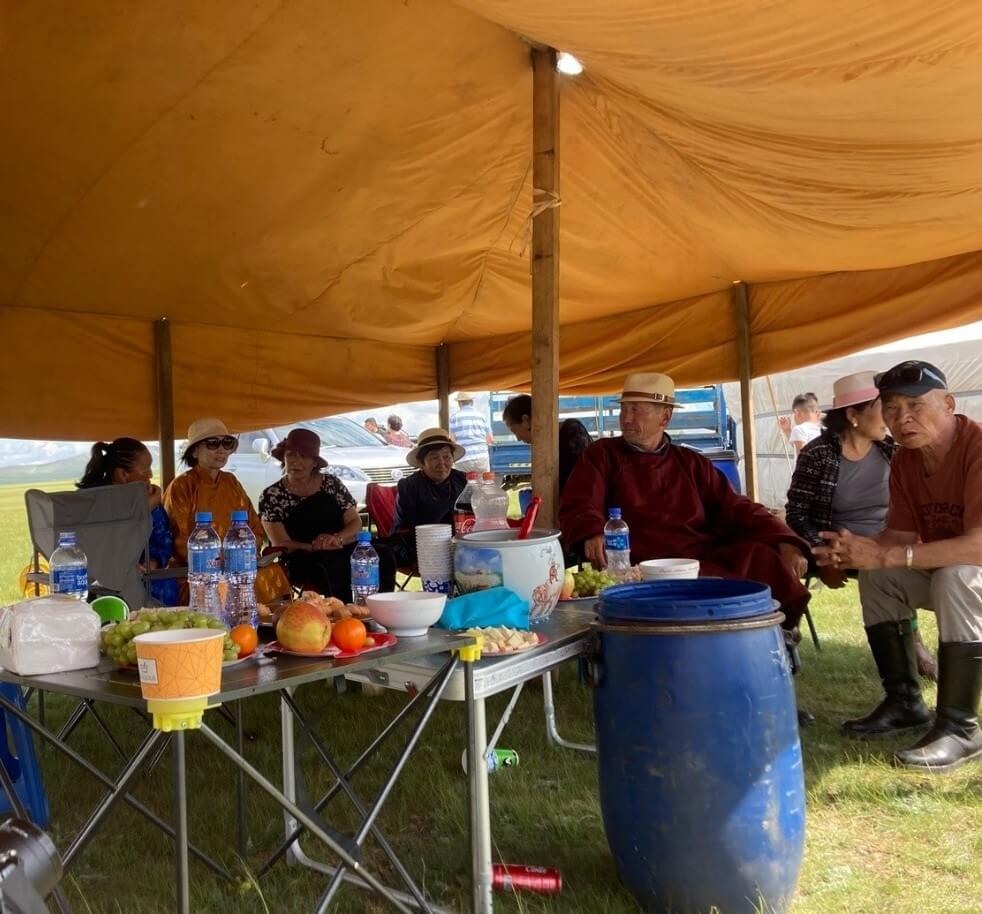
Eating, talking and waiting for the ceremony. Photo by Troy Sternberg
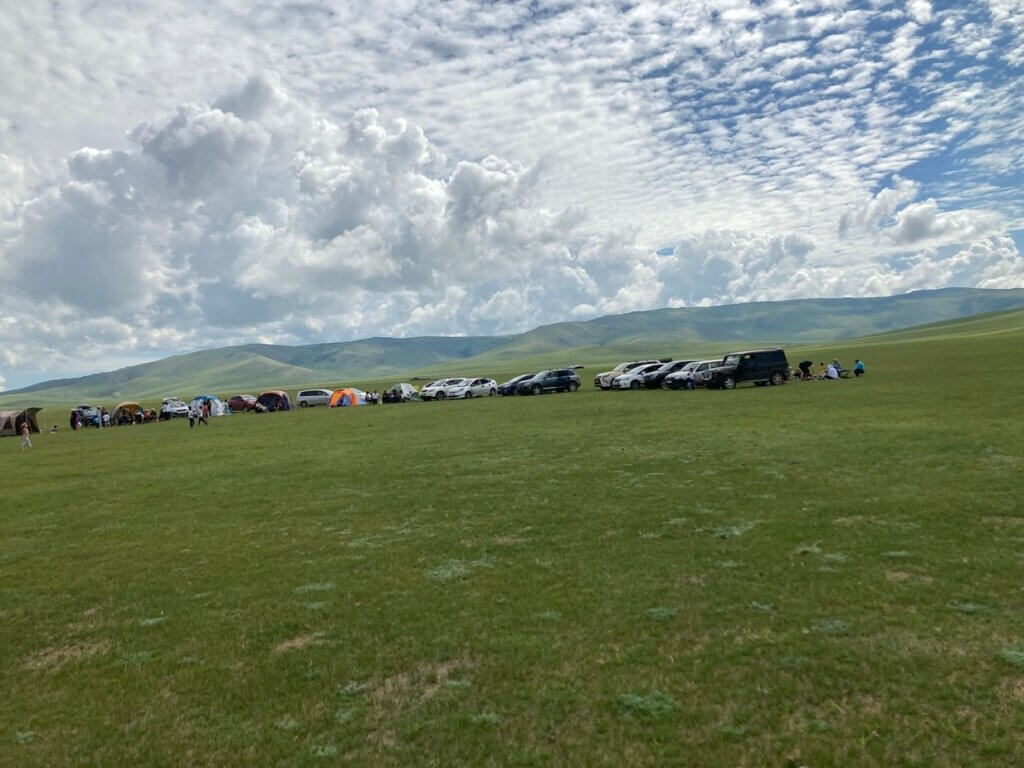
Parking lot. Photo by Troy Sternberg
We were invited to the main tent and introduced. Of course, this was followed by a bowl of airag for all. It became clear that this was a family gathering, perhaps a clan. Many ages and generations were there, all dressed in ritual finery, dels and ceremonial hats. All were welcome, though our connection was less than clear. Had the Japanese professors met them previously? Was this an annual event? Was there a motivating reason or cause for the celebration? In Mongolian style the particulars were not important, they would emerge in time. First one must eat, relax and talk; later the details could be explained. The one hundred kin were in a festive mood.
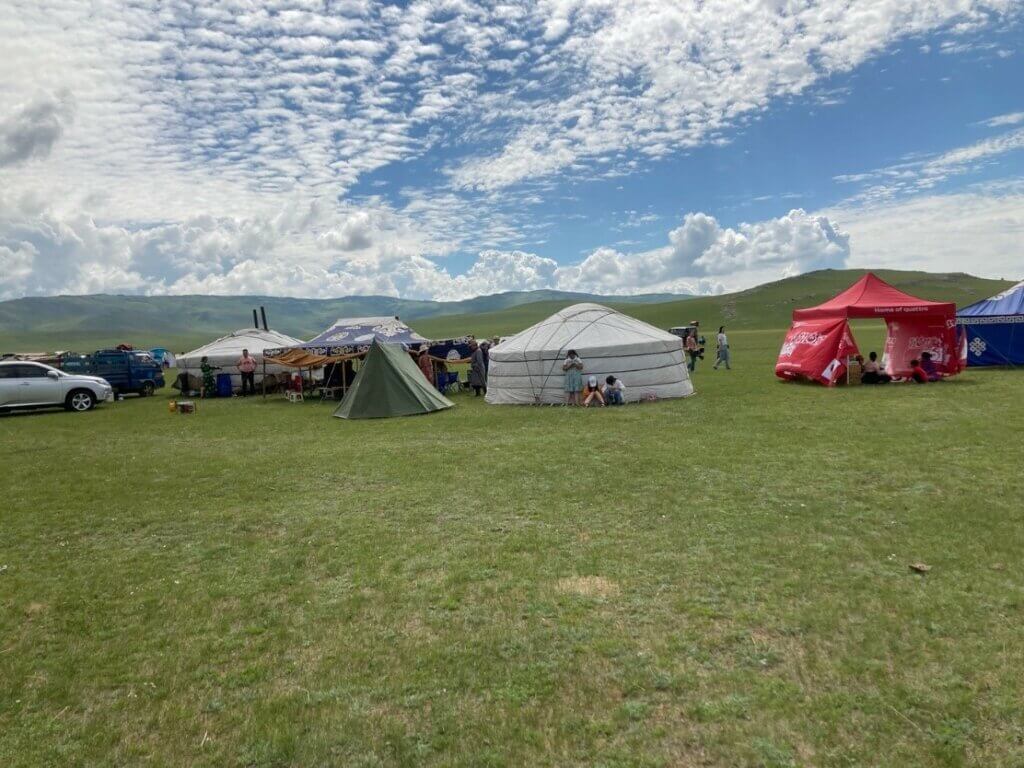
Tents and Monk’s ger. Photo by Troy Sternberg
The assembly was a relative group, all tracing their lineage to a Buddhist monk from pre-Soviet times. In 1922 he had consecrated the hilltop, recognised by putting an ovoo on the summit. Today was the centenary of the event. Though for 70 years any mention of an ovoo ceremony was forbidden, this narrative had been reconstructed and accepted by all present. The story emerged that the Soviet government destroyed all the monasteries and expelled the monks. Thus the ancestor eventually got married, starting a family which led to all the participants at the commemorative ceremony. Chosen as an auspicious day, this was the 2nd gathering of the family at this site. The previous reunion had been 9 years before. This was a tribute to the ancestor as family members made speeches in his honour. Surprisingly, no one lived in the local area.
The event was much anticipated by the family. Plans were made months, even years ahead of time by those living outside Mongolia. Two families had lived in Japan for twenty years. This explained the fluent Japanese and cultural knowledge. The Japanese professors said they spoke flawlessly. One daughter had spent most of her life in Japan and had received a scholarship to study Maths at Nagoya University (known for environmental research in Mongolia). Several of them, especially the teenagers, spoke English as well.
The group was waiting for the monks to arrive from the capital to perform the ovoo ceremony. So we talked, walked about the several tents, explained where we were from and expressed a desire to see and share in the ovoo ritual. In time an SUV arrived. Out spilled four monks. Music over loudspeakers greeted the city guests. Without an introduction they were taken into a ger to be welcomed and fed by the family elders. Their next appearance was walking outside eating sheep meat off the bones. Amongst much expectation and anticipation the monks then emerged in full robes ready to conduct the ovoo ceremony.
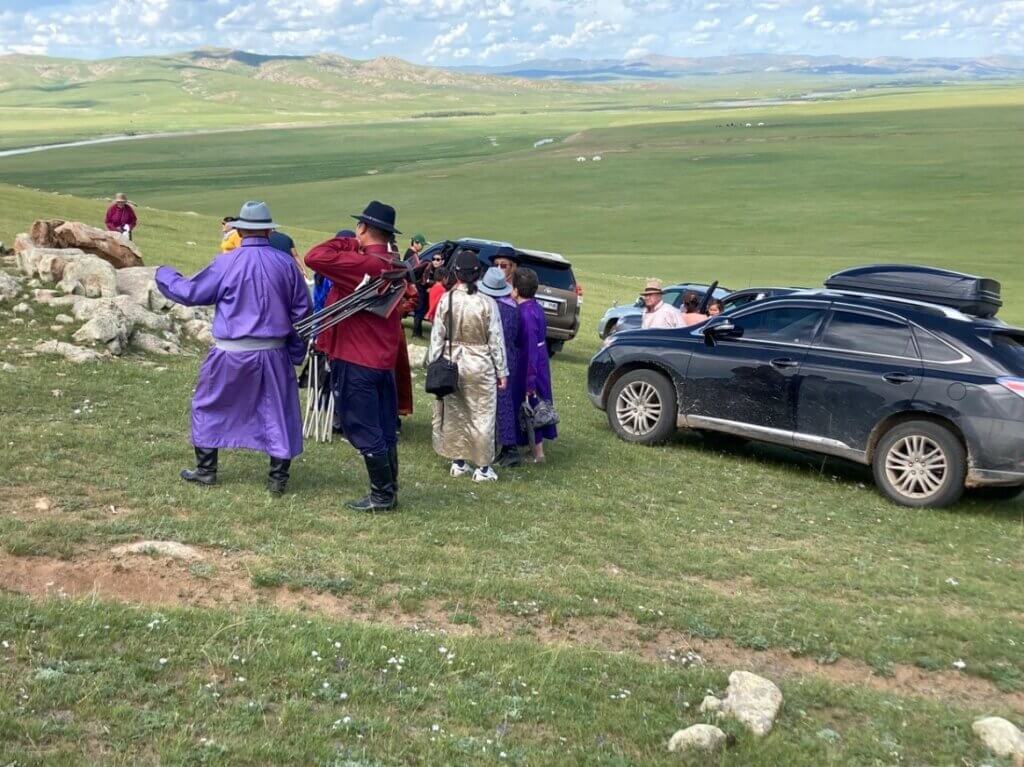
Parking on hill. Photo by Troy Sternberg
Though only a few hundred meters uphill most people drove their vehicles and reparked near the ovoo. There at the top was a significant ovoo. Large, >2 metres high and several metres in circumference, next to the ovoo stood a tall structure (see photos). This was adorned by additional posts in an unusual display at the ovoo. Scarves were wrapped around a stick in the ovoo centre.
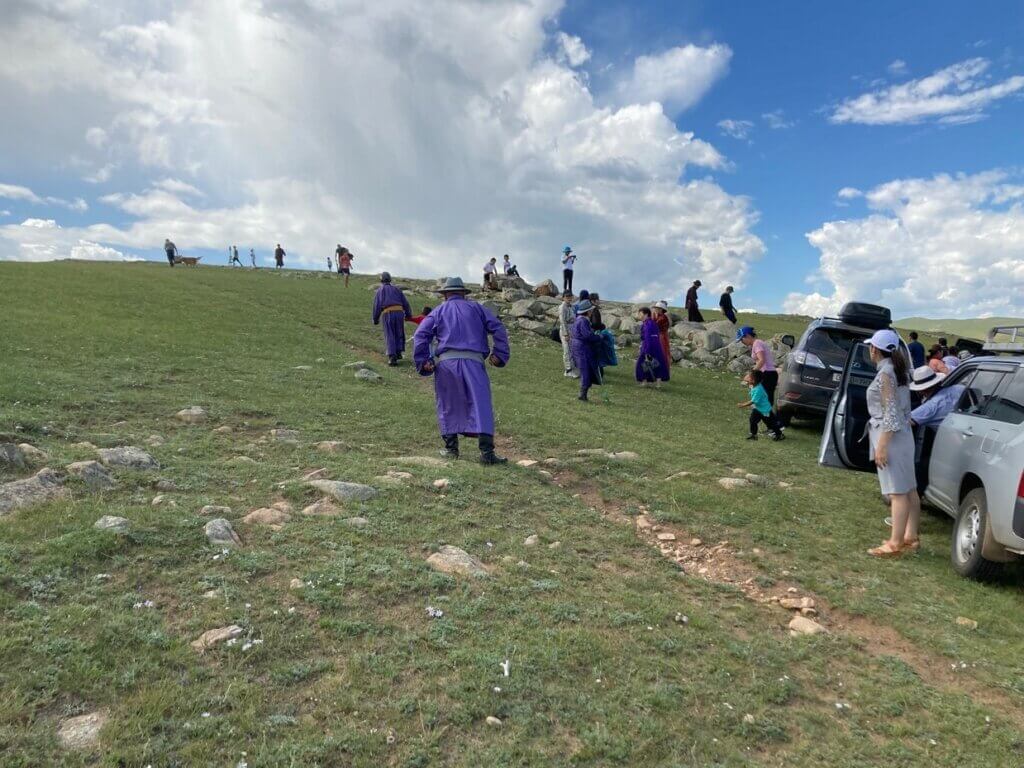
Walking to the hilltop. Photo by Troy Sternberg
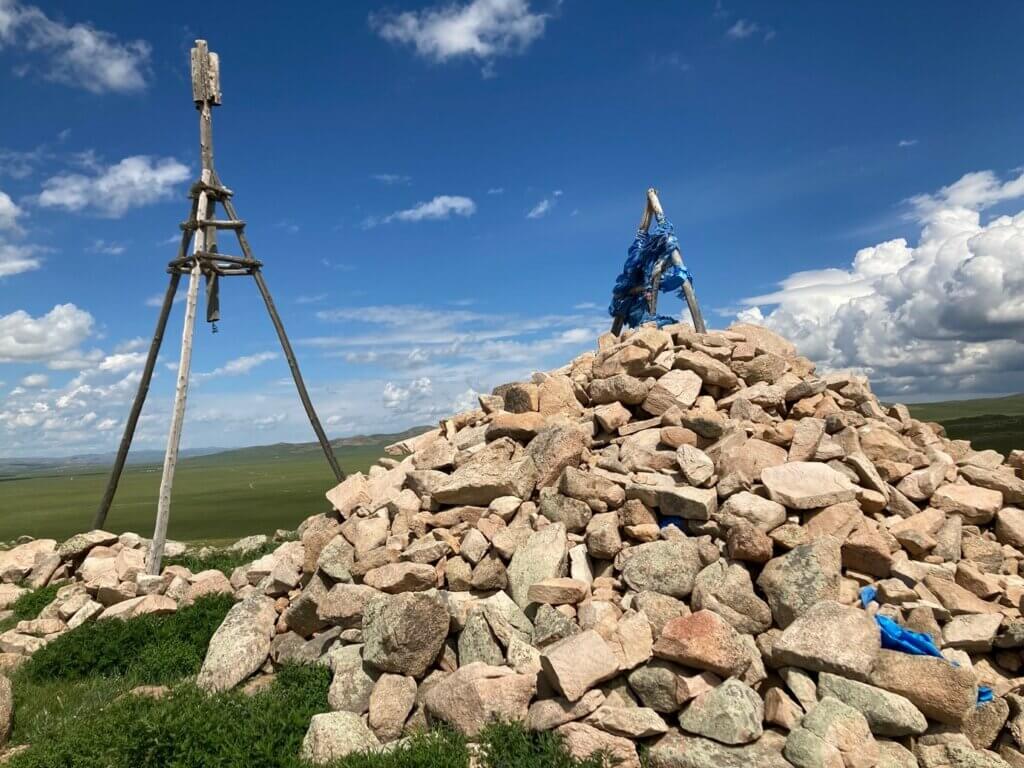
Ovoo. Photo by Troy Sternberg
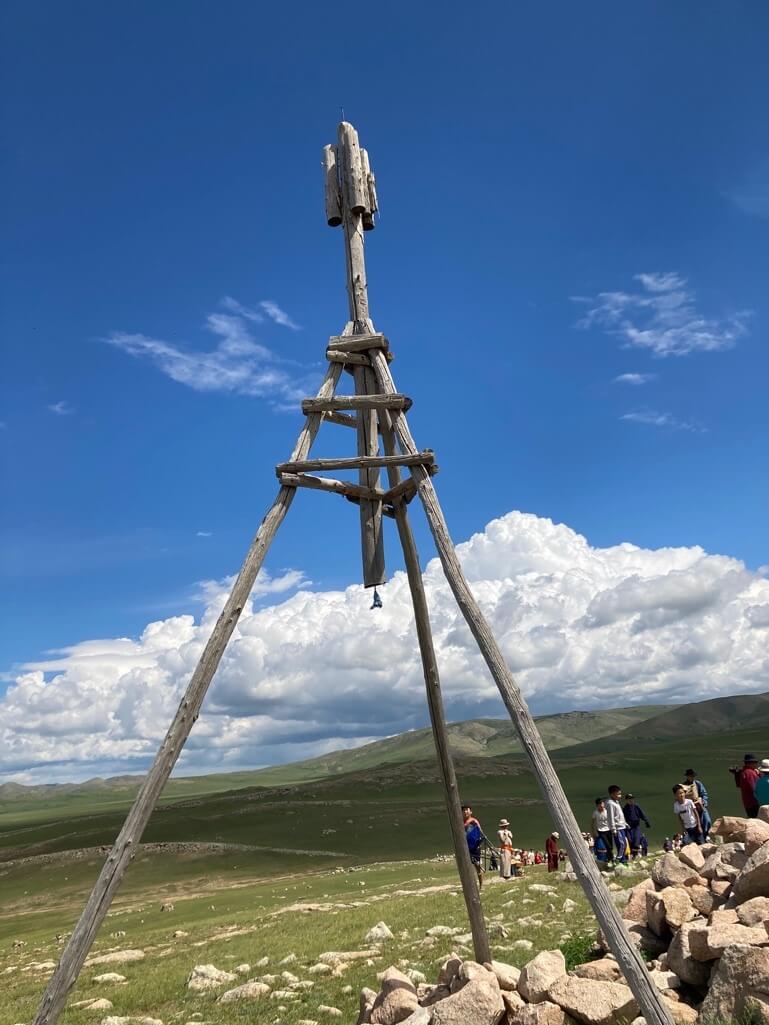
Ovoo external structure. Photo by Troy Sternberg
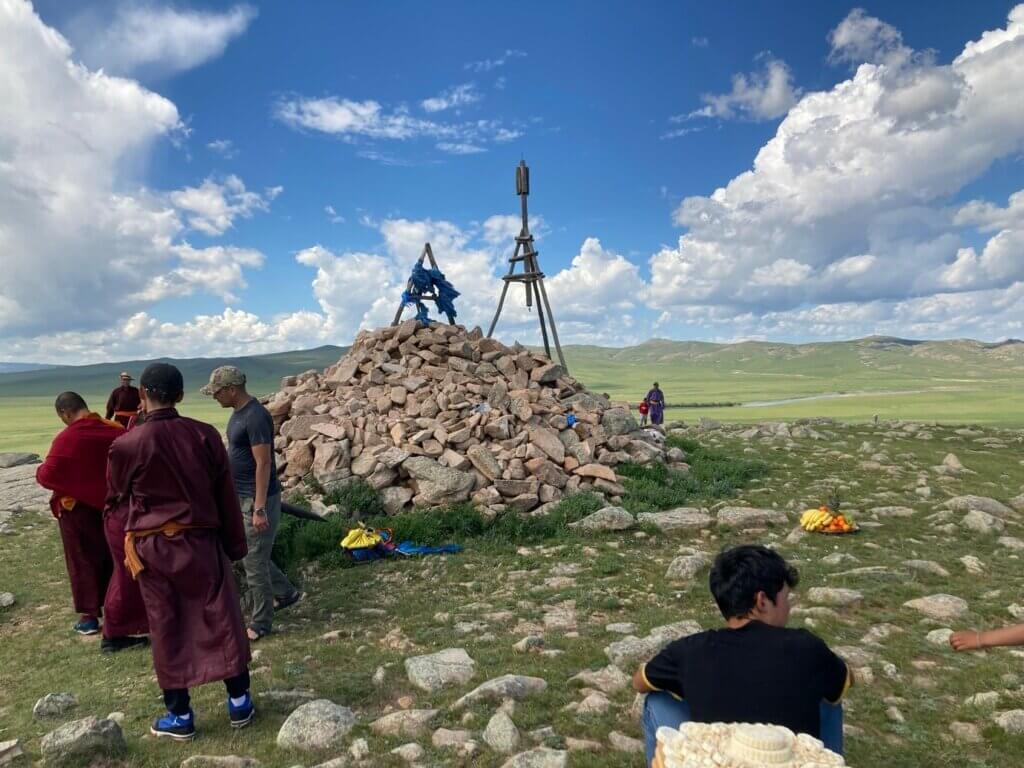
Ovoo #2. Photo by Troy Sternberg
Gradually the monks commenced the ceremony. This involved much time setting up and testing the microphone and amplification. Then came an orderly walk around the ovoo with the senior monk sitting closest to the ovoo. An incense fire was lit that effectively swathed the proceedings, lending a spiritual tone. Family members filtered in, talking, jovial, ready for the afternoon’s programme. Horse dung smoke were placed about. It appeared the most traditionally dressed sat closer to the monks and the ovoo. Women and men intermingled; children flitted around the hilltop.

Ovoo external structure #2. Photo by Troy Sternberg
There was no apparent introduction or beginning. The monks simply started chanting a repetitive verse. At a break three family members spoke some words – perhaps of thanks, or a benediction. The senior monk held the microphone, and sated from lunch, gave a relaxed drone, catching his breath and continuing. After some minutes the microphone was passed to the second monk to recite the words. Throughout cymbals and bells rang, a small drum kept a beat. At some point a new chant started, all stood up for this. The audience listened attentively, then focus gradually drifted. The sun was shining. In the foreground was the majestic Orkhon river. There was no other interaction between the monks and observers. An attendant ensured there was water and airag for the monks to drink. Another added incense to the fire. The chanting continued; the afternoon’s pattern was set.
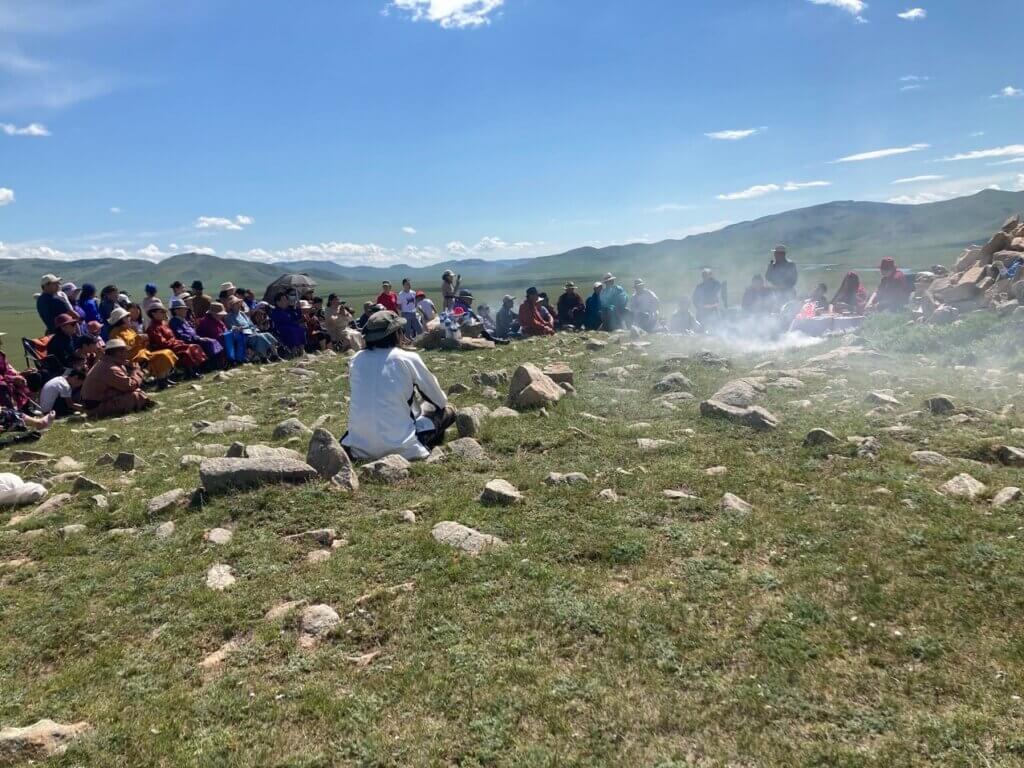
Chanting in action. Photo by Troy Sternberg
The essence was the ritual to honour the family’s shared ancestor, the hilltop now named after the monk. People listened with passing interest, watched the free children, checked their mobile phones. Thus, the ceremony appeared to be process rather than content. It was not clear that listeners understood the chants. Each had roles to perform, the monks were external validation of reverence given to the event and imbuing importance to the proceedings. There was not a sense of dominant action or phase to the recitations. This was the performance that drove and enabled the reunion, the serious part of the afternoon. The event marked time, relations, recognition of the past and present.
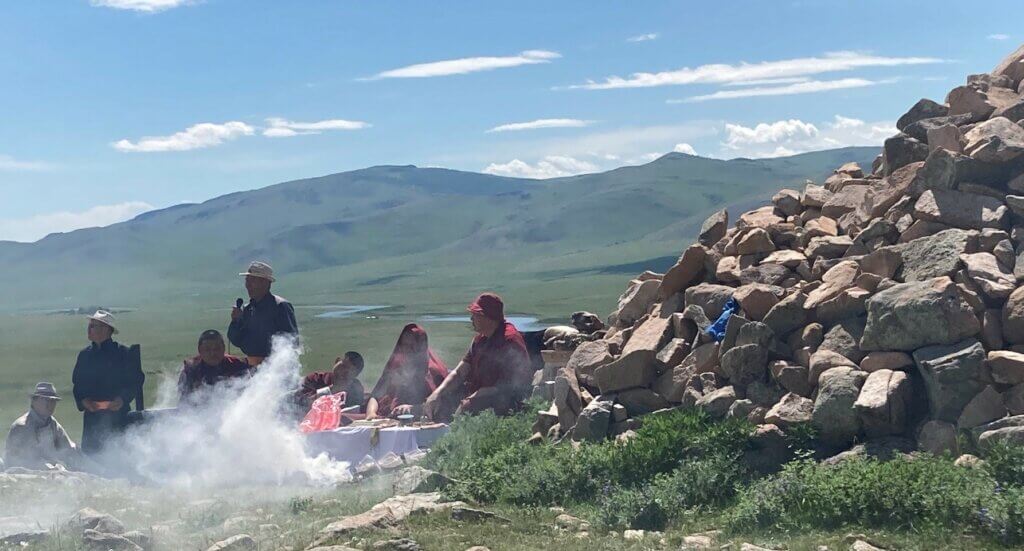
Ovoo ceremony. Photo by Troy Sternberg
An explanation was that the three-hour ceremony encouraged people to pray and reflect. This was for relatives, nature, one’s hometown. Happiness and good things were considered. The elders respected the lamas, the process and ritual. Food was important, a whole sheep was cooked, including the head. There was airag, aaruul, milk and fruit for all. It was important to share the feast. There were presents for children and elders. It was uncertain when the family would next gather. Tonight, the family would camp on the steppe.
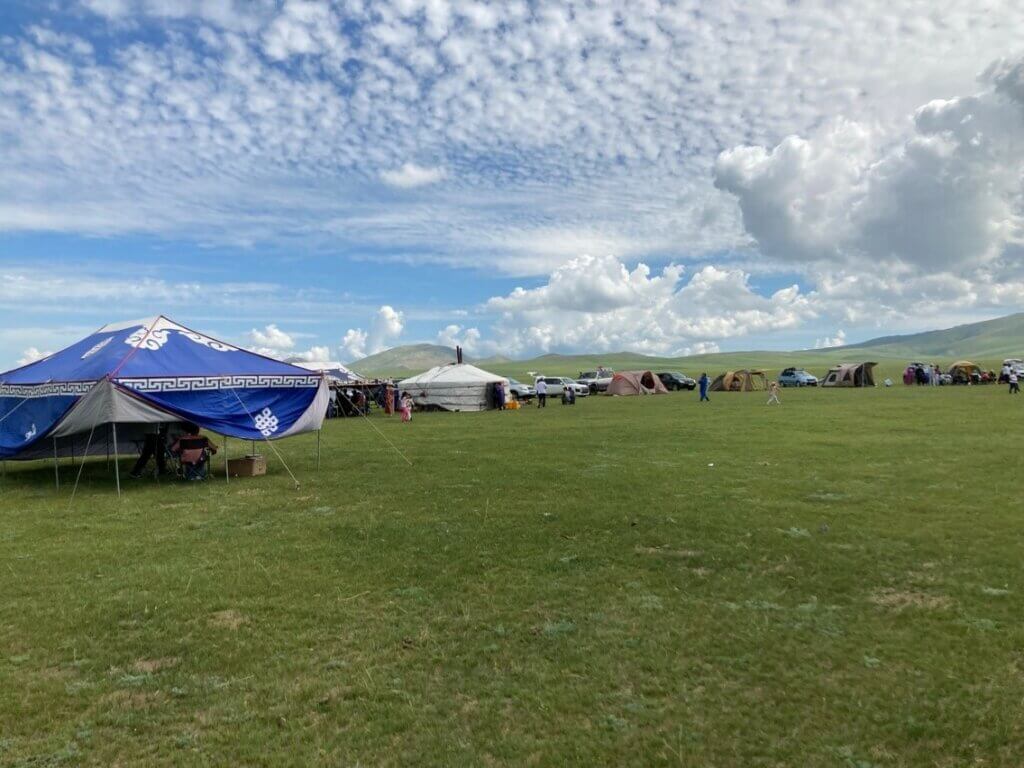
Festival. By Troy Sternberg
So the afternoon softly drifted on. It was a successful gathering of a cheerful family. People were jovial, happy, in good spirits. The Japanese vehicles, the families living abroad, the children at university, the display of tents and food reflected prosperity and standing. After an hour a visiting professor suggested we had stayed sufficiently long to be polite. That was the cue to slowly disengage and depart. Attention was slack, no one seemed to mind. We eased our way downhill. There our driver was eagerly waiting to depart. We eased over the grassland, waving goodbyes. A few hills further on we stopped, discussed the remarkable afternoon. One professor had had too much airag. We snacked on curds and cold meat, drank tea and enjoyed the excursion. We were back to Mogod in time for dinner.

